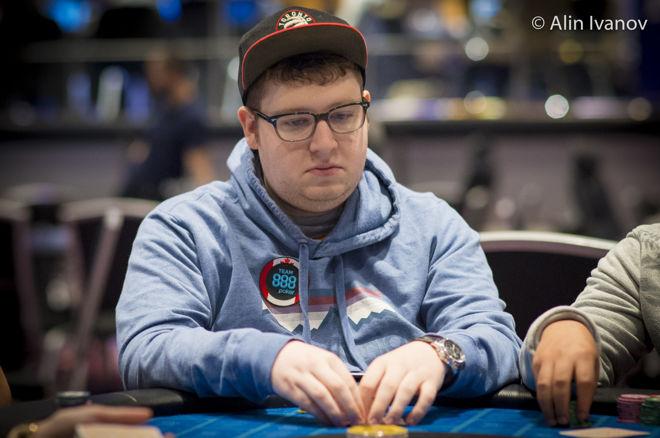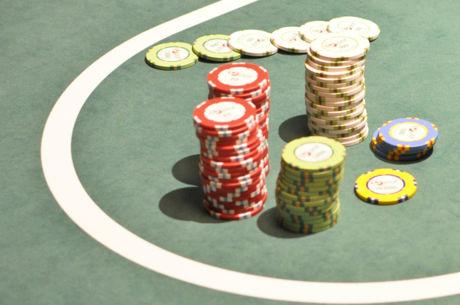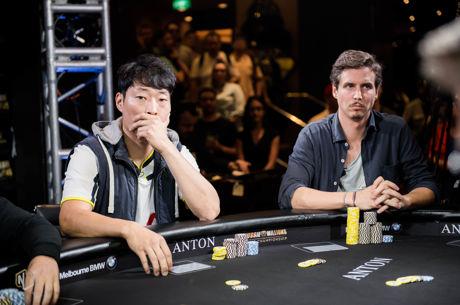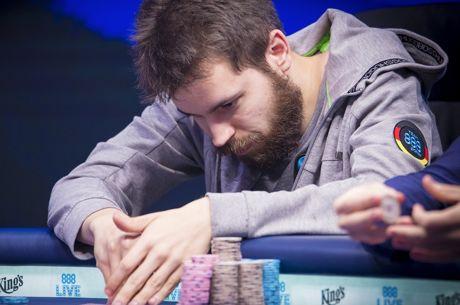Overbetting the Wrong Street: Parker Talbot on Postflop Bet Sizing

In this hand, I experiment with a little bit of turn overbetting. The hand came up last week during the $530 Bounty Builder High Roller on 888poker. Looking back, I think the overbet on the turn was probably a mistake in this hand. Actually, overbetting wasn't such a bad idea, but the turn probably wasn't the street on which to try it. Read on and see what you think.
It was Level 18 (1,800/3,600/360) and we were all mostly very deep. I had 420,000 on the button and the villain in the hand had close to 285,000 to begin.
It folded around to me and I raised to 2.2x BB with Q♦8♠, and my opponent in the big blind called. The flop came 9♦4♦J♠ and the big blind checked. With an overcard, a gutshot, and a queen-high backdoor flush draw I continuation bet 30 percent of the pot and he called. Pretty standard stuff.
The turn is where it gets interesting. The turn was the 2♦, putting a third diamond on the board and giving me the flush draw. At this point when checked to I decided to go with an overbet of almost 40,000 — more than the 31,000 or so in the pot at this point.
After talking with some friends about the hand, I think this big turn bet wasn't so great. While I might have a few overbets on the third diamond, I don't really have that many overbets here on this card.
Nevertheless, in practice I thought it was a pretty decent spot. I think the overbet applies a lot of pressure to any sort of one-pair hand. It also applies pressure to a straight draw without a diamond, which he'd have to fold. Then again, if he has the flush I'm obviously getting crushed and that's the main reason why I shouldn't make this overbet, because I'm just super-dead when I do this and he has a good hand.
He ended up calling the overbet relatively quickly. The river then brought the A♥, and I decided to bet about 72,000 into 110,000 or so — a little under two-thirds pot.
This bet I'm okay with, but if I had bet two-thirds pot on the turn and then overbet the river, I think that works even better than the reverse. I ended up getting heroed — after a long tank, my opponent called with K♣J♣ (a pair of jacks, no diamond) and won the pot.
I think after overbetting the turn I sometimes should overbet the river here as well, potentially polarizing myself even more and really applying the pressure to those one-pair hands. My thinking on the river was that I could have AxKx, AxQx, even Ax10x with a diamond that I'm going to want to value bet. I'm not 100 percent sure I'd value bet all those hands (I might just check back), although I probably would bet ace-king or ace-queen (again, with a diamond).
So I went for that sizing (two-thirds pot) that can represent one-pair hands and also nutted flush hands, as opposed to making an overbet where I'd never have those weaker value hands.
It was a fun and interesting hand at the time with some big bets involved, even if I ended up not getting the fold which is unfortunate. He did tank an insanely long time on the river, though!
As I say, I'm thinking the turn overbet was probably the mistake in the hand. If I had reversed it — making a two-thirds bet on the turn and then overbetting the river — I'm pretty sure that line would have made more sense (and probably works almost every time).
Online poker pro and 888poker Ambassador Parker "tonkaaaap" Talbot of Toronto is currently one of the game’s most popular and entertaining Twitch streamers. He can be found streaming several times a week on his Team NeverLucky channel. In addition to playing online, Talbot has collected numerous live tournament scores over recent years, highlighted by a €160,080 cash and final table in a EPT Barcelona High Roller.









